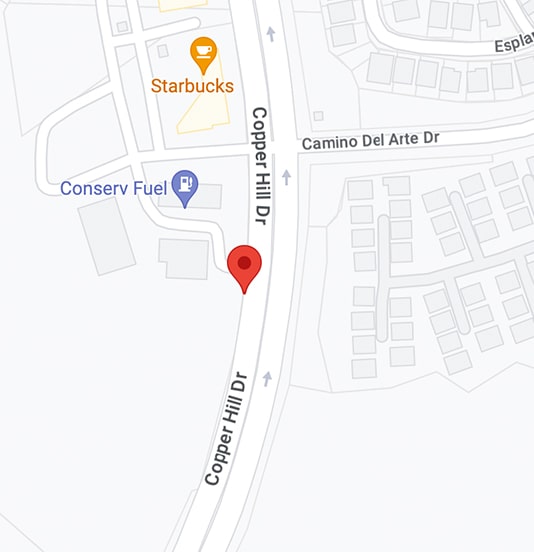Do you ever wonder what you would do if you suddenly experienced a severe toothache, gum bleeding, swelling, or the tooth was knocked out due to a dental trauma? The unexpected nature of dental emergencies necessitates a quick response, such as visiting the dentist for a tooth extraction procedure if there is no other remedy.
At Valencia Advanced Dentistry at Copperhill Smiles, we offer emergency tooth extraction services for patients seeking them in Santa Clarita. Contact us to schedule a same-day emergency tooth extraction appointment. We offer professional and personalized services tailored to transform your smile and dental health for a lifetime.
Emergency Tooth Extraction Overview
Tooth extraction is a dental procedure in which a tooth is carefully removed from its socket within the jawbone. A professional oral surgeon or dentist generally performs the procedure.
Tooth extraction can be scheduled, or it can be an emergency. Seeking emergency tooth extraction becomes necessary when you want relief from swelling, bleeding, and pain. An emergency dentist will always attempt to save whatever they can and address the underlying issue by opting for less invasive procedures.
Like other intricate dental procedures, tooth extraction entails some degree of pain and discomfort. Planned tooth removal entails carefully planning and evaluating the situation, while an emergency extraction procedure aims to stop the bleeding, minimize the pain, and save other remaining teeth.
Types of Teeth Extraction Procedures
There are two tooth extraction procedures per dentist's classification. The extraction procedure applicable to your case will depend on your specific condition and the affected tooth's location, size, and shape. These procedures are simple, surgical, and wisdom tooth extraction.
Simple Extraction
The simple extraction procedure is where the dental professional does not have to conduct invasive procedures and access the region underneath the gum line. This procedure is typically done when the patient is under local anesthesia. In many cases, the easy-to-access teeth are removed with this process. Also, the procedure is generally considered if the tooth is visible above the gum line, and the dentist can grasp and remove it by forceps.
Surgical Extraction
The surgical tooth removal procedure is more intricate than a simple extraction. It is conducted when a section of the gum tissue or bone surrounding the teeth must be removed. To conduct this procedure properly, the dental professional must penetrate the bone, gum tissue, or both. If need be, the dental professional will first break down the tooth into pieces before extracting it.
Reasons for Emergency Tooth Extraction
Dental emergencies manifest in various ways, each necessitating swift attention by a dental professional. Several situations may necessitate emergency tooth removal, including:
Impacted Teeth
An impacted tooth is a tooth that fails to erupt fully from underneath the gums because of a blockage. This primarily happens with wisdom teeth. Emergency dentists opt for emergency tooth removal to keep an impacted tooth from destroying other teeth. Additionally, removing impacted teeth reduces the risk of overcrowding and gum infection.
Impacted wisdom teeth can also cause immense, consistent pain, which is another reason for seeking emergency dental services and having them extracted. In certain situations, impacted teeth might not cause immediate problems. However, they are more susceptible to developing gum disease, infection, and decay than other teeth.
To Treat Gum-Related Diseases
Gum-related diseases include infections in the periodontal ligaments, gums, and other structures of the teeth, such as the alveolar bone. The earlier stages of these gum conditions and diseases can be diagnosed as gingivitis. However, as the infection progresses, it can spread to other mouth parts, affecting them. Once the periodontal ligaments or alveolar bone start to be affected, tooth removal is the best solution to control the damage and start recovering.
You can prevent gum-related diseases by routinely brushing, flossing, and ensuring no plaque accumulates on the gums and teeth. An emergency dentist will focus on stopping further damage by removing the infected tooth. On the contrary, a non-emergency dental professional will aim to restore the health of the teeth and the supporting structures.
Severe Tooth Decay
Once tooth decay extends to a point where saving it is not possible, an emergency dental professional will recommend tooth removal. In tooth decay, bacteria infiltrate the tooth, attack the pulp, and result in an infection. In general, dentists perform the root canal procedure to treat tooth decay. However, in severe decay or tooth infection cases, dentists will extract the affected tooth to treat the decay and prevent the infection from spreading.
Fractured Tooth
Teeth can be fractured for several reasons. It could be because of an accident or the energy the teeth absorb. Each time we chew or bite on food, our teeth absorb energy. When the teeth do not fit with one another, the force of the bite could exert unnecessary pressure on the lower molars.
Apart from this, you are highly likely to have a fractured tooth when you have recently undergone a root canal procedure or had a filling. In the worst-case scenario, a fractured tooth underneath the gum line must be extracted immediately.
Overcrowding
Overcrowding of the teeth is another cause for emergency tooth extraction. We usually say that people should only eat as much as they can digest. The same applies to our teeth. A person should not have more teeth in their mouth than can fit. This condition is known as crowding teeth or overcrowding, and emergency removal is necessary.
If the additional teeth are not treated or extracted, it can result in gum infection and jaw damage. It could also result in crooked teeth because the extra teeth will fit in the spaces they find and shift the others from their rightful position.
Misaligned teeth come with a series of problems. It is, therefore, best to have extra teeth removed. And to ensure an effective outcome, you want to seek emergency dental services.
Severely Weakened Supporting Teeth Structures
Gum disease is a prevalent cause of tooth removal. This condition severely weakens the jawbone and gums that support teeth, resulting in the loosening of the teeth. In most cases, especially when restoring the jawbone or gums is impossible, tooth extraction is recommended, followed by replacing the removed tooth or teeth.
A Cracked or Chipped Tooth Beyond Repair
Cracks and chips are the most prevalent injuries to the teeth due to dental trauma. Mostly, a dentist can repair cracks and chips using a dental veneer, crown, or other dental restoration. However, removal may be the only solution if a crack or chip extends toward the tooth root and the tooth is severely damaged.
If Repositioning a Tooth In Its Socket Properly Is Impossible
Among the most prevalent causes of tooth removal is if the tooth is knocked loose in its socket, for example, after a trauma, biting on an extremely hard substance, or an accident. In most cases, when immediate care is given, the dental professional can reposition and stabilize a tooth that is knocked loose. But that is not always possible; sometimes, removing and replacing the tooth may be the best option.
Severely Infected Tooth
Another prevalent reason for tooth removal is a severely infected tooth. A tooth can be infected when bacteria attack the tooth root. This could also result in a dental abscess. In most cases, root canal treatment can be conducted to reach the tooth root, extract the infected part of the tooth, and fill the space left after the extraction. But for a severe infection, tooth removal is the best solution.
How To Know It Is a Dental Emergency Situation
Apart from the reasons provided above, observe these conditions and symptoms to determine whether you should seek emergency tooth extraction services:
- Bleeding—bleeding teeth and gums is another good reason to seek emergency dental services. Usually, bleeding results from an injured jaw, loose tooth, tooth fracture, tooth infection, infected gum, et cetera
- Excessive pain—unbearable, consistent pain is a valid reason to go to an emergency dentist for a tooth extraction.
- Swelling—swelling of the gums is another reason to want to see an emergency dentist and not wait until you schedule an appointment for a routine dental checkup.
What To Expect During an Emergency Tooth Removal Procedure
This relatively common, fast, and painless procedure only requires local anesthesia for numbing the site where extraction will occur. In some cases, the dentist might use a strong general anesthetic to assist you in sleeping throughout the procedure. The dentist will first loosen the tooth before pulling it from its socket.
After the dentist removes the tooth, a blood clot develops in the pocket. The dentist will put a gauze pad into the socket to stop the bleeding. They may need a few self-dissolving stitches to close the gum edges over the extraction site.
Preparing for the Emergency Tooth Extraction Procedure
Before you undergo the extraction process, your dentist will ask you about your dental and medical history. Inform them of any existing health conditions, allergies, and recent medical procedures you have undergone. Also, inform your dentist if you are currently taking any medication, like over-the-counter medications, contraception, or inhalers. Lastly, inform them if you have any of the following conditions:
- Thyroid and liver disease
- Diabetes
- Artificial joints
- Impaired immune system
- Hypertension
For a scheduled tooth extraction, you would have to do the following:
- Avoid smoking after and before
- Plan on who will take you home if the dentist administers any sedation.
- Tell the dentist if you are experiencing the flu before the appointment—you might have to reschedule.
- Inform your dentist if you vomited or experienced nausea the night before—you might have to reschedule
However, because you will be undergoing an emergency tooth extraction process, you will not follow the above steps since it is a procedure that must be conducted immediately.
The Actual Procedure
The precise tooth extraction procedure varies based on the patient's general health, the affected tooth’s location and condition, and the oral surgeon's or dentist's approach to treatment. But most emergency extractions are conducted in the same steps as follows:
- Anesthesia—the dentist will inject a local anesthetic into the region surrounding the affected tooth. If you have anxiety or must undergo the surgical extraction procedure, you may need conscious sedation.
- Preparing for surgical extraction—if it is a surgical removal, your dental professional will cut into the gum tissue surrounding the affected tooth. They might break the tooth into two or several pieces for the removal to be easier.
- Preparing simple extraction—for the simple extraction procedure, your dental professional will use specific tools to exert pressure on the tooth from different angles, widening its socket and making extraction easier.
- Actual extraction—the dental professional will grasp the tooth using forceps and rock it back and forth. Additionally, they may rotate it to detach it from its ligaments. If they must section the tooth, they rock and rotate one piece at a time.
- Stitches—after the dentist removes the tooth, they may do one or two stitches to close the wound.
- Recovery—you might experience swelling and pain for the following few days. Your dental professional may recommend over-the-counter painkillers or prescribe medication for you. Ensure you obey their instructions to recover faster.
What to do After an Emergency Tooth Removal
The recovery period from this treatment will vary based on the type of your dental problem, the extraction procedure, and the tooth location. You can take various steps after tooth removal to help recover and minimize the likelihood of complications.
After the removal, you will receive comprehensive instructions regarding what to anticipate and any steps you should take. Helpful tips to help you include:
- Starting twenty-four hours after the treatment, gently rinse using warm water mixed with salt to maintain cleanliness around the area.
- Place an ice pack on your cheeks as your dentist directs you to help relieve swelling.
- Avoid smoking for seventy-two hours after the procedure
- For thirty minutes after the procedure, bite down on a piece of gauze to assist in stopping the bleeding. If you continue to experience heavy bleeding, bite down on a cotton pad for another ten minutes. Call your dentist if heavy bleeding persists.
- Avoid strenuous exercise and activities for the first few days to help your recovery.
- Eat cool, soft foods like ice cream, pudding, and yogurt during the first few days.
- Avoid spitting, rinsing, or using a straw for the first twenty-four hours to enable the formation of a blood clot.
Ask your dental professional any questions regarding at-home care before leaving the clinic.
The Cost of Tooth Extraction
Emergency tooth extraction can be costly. The precise cost varies based on the type of procedure, the tooth's location, the dentist’s location, and a patient’s insurance plan. Remember, not all dental insurers cover emergency tooth extraction. Typical costs for emergency tooth extraction are:
- Simple extraction costs between $75 and $250 per tooth
- Surgical extraction costs $180-$550 per tooth
- Wisdom tooth removal costs between $120 and $800 per tooth
Emergency Tooth Extraction FAQs
To learn more, these are the frequently asked questions patients ask regarding emergency tooth extraction:
What Should I Do If I Have an Entirely Knocked-Out Tooth?
Sometimes, a dentist can reposition and restabilize a tooth knocked out of its socket entirely. This is especially possible if the patient preserves the tooth properly and takes immediate action. If saving the tooth is impossible, the tooth replacement procedure can start during an emergency dental visit.
Is an Extraction Painful?
Among the primary concerns that dental patients have is whether the tooth extraction procedure is painful. Unfortunately, many patients feel some level of discomfort during the removal procedure. However, the dentist can assist in minimizing the level of discomfort by administering local anesthesia. Pain (and slight swelling) might continue for twenty-four to seventy-two hours following the procedure. A patient can alleviate the swelling and pain they experience by using at-home remedies, like a cold compress and over-the-counter painkillers.
What Risks Do I Face If My Infected or Damaged Tooth Is Not Extracted?
Most dental professionals only suggest tooth removal when it is impossible to save the tooth. Even though extracting the tooth may cause some discomfort, the discomfort caused by dental trauma, infection, and decay is often prolonged and more severe. Eventually, the tooth will likely fall off after the discomforting symptoms worsen and become severe and nearly intolerable.
How Long Will the Emergency Extraction Procedure Take?
The period it will take the dentist to perform the emergency tooth extraction procedure will be based on various factors, like the kind of dental issue you have, whether one or several teeth must be extracted, the severity of the dental problem, etc. The procedure might take as little as twenty to forty minutes.
What about wisdom tooth extraction? Some emergency dental extractions entail extracting impacted wisdom teeth, and patients often wonder how long it takes to remove these teeth. Generally, most patients can anticipate spending between forty-five minutes and two hours at a dental visit for this kind of procedure. This period includes the time it takes to numb the extraction site with anesthetic, remove the tooth or teeth, and administer postoperative care.
How Long Before Healing Completely?
Most wisdom tooth removals heal completely in seven to ten days. Whereas complications rarely happen, look out for these signs after your treatment and call your dental professional if any of them occur:
- Discomfort or severe pain
- Swelling or prolonged bleeding
- High temperature
Sometimes, a blood clot might not form around the extraction site, a condition called dry socket. This condition usually arises two to four days after tooth removal and causes extreme pain. Should this happen, contact your dentist immediately. The dentist will disinfect the area, apply a dressing, and prescribe medication to avert infection.
Find a Professional Emergency Dentist Near Me
At Valencia Dentist, we offer state-of-the-art emergency dental services for patients seeking them in Santa Clarita, emergency tooth extraction included. Our emergency dentists boast the best skills for dental extractions and are masters in all types of procedures. For professional and comfortable tooth removal services, do not hesitate to call us at 661-775-7717.




